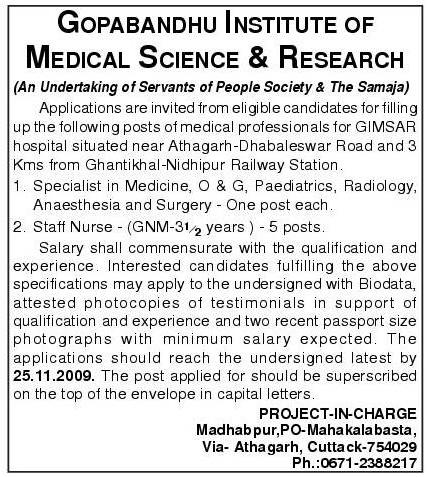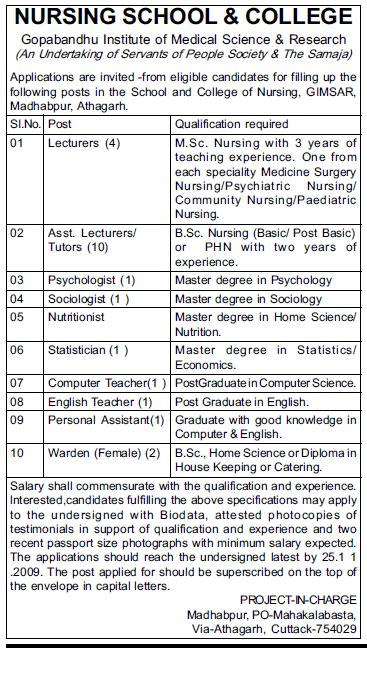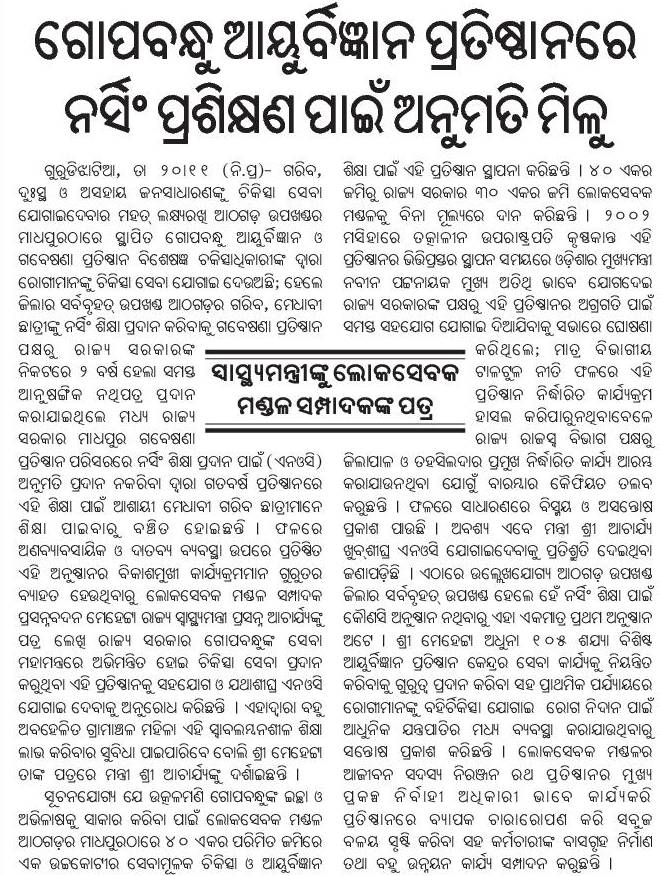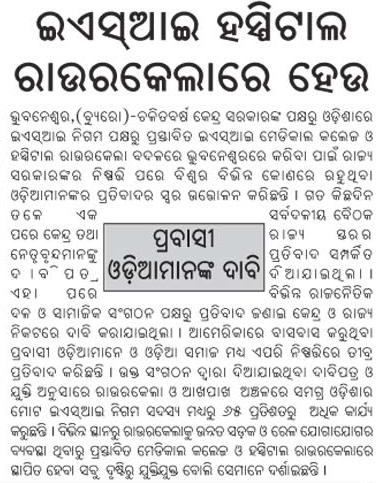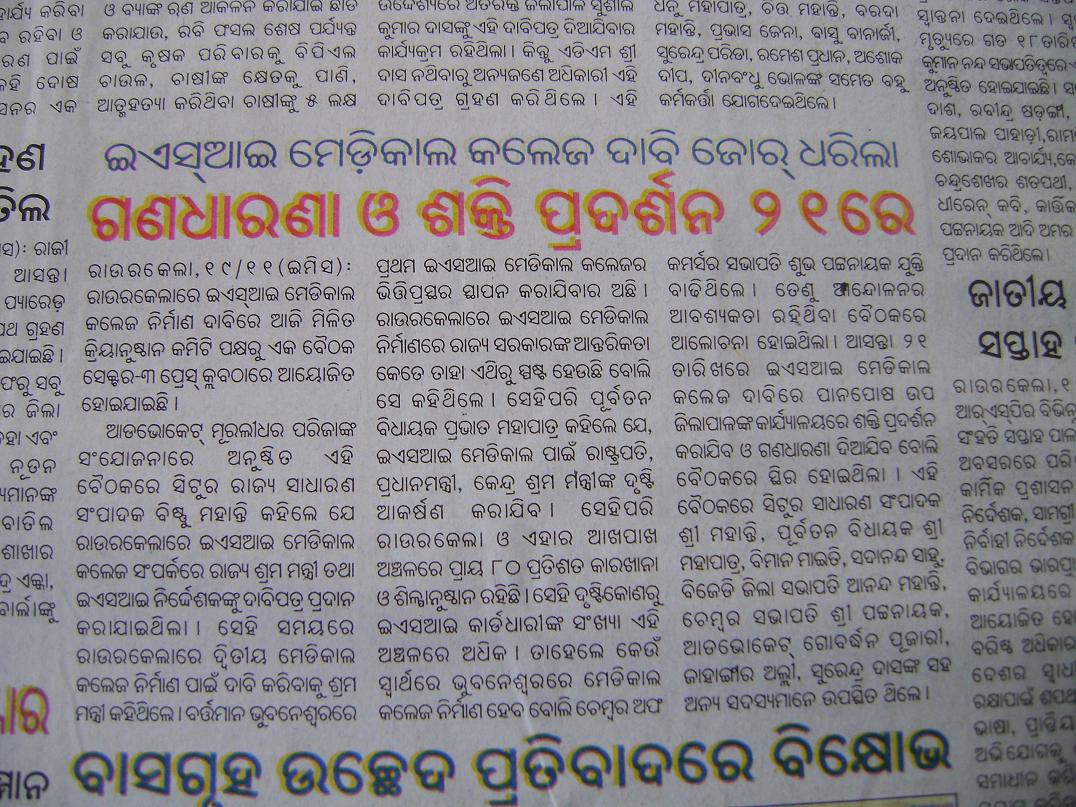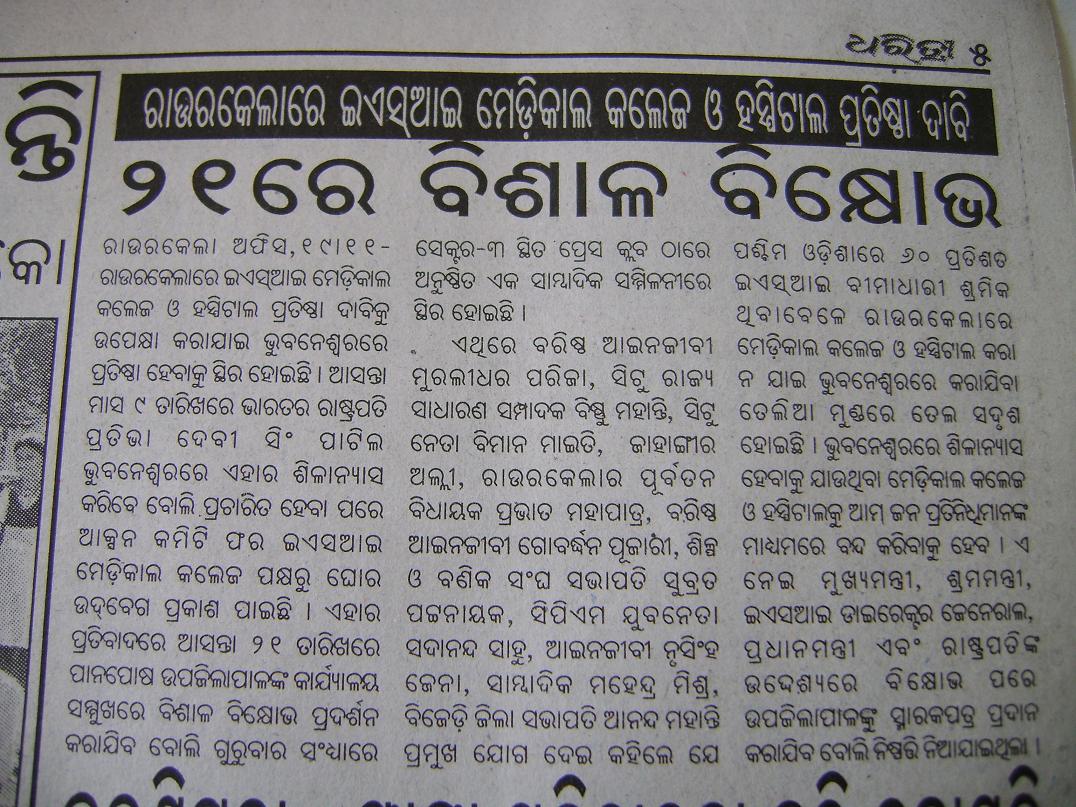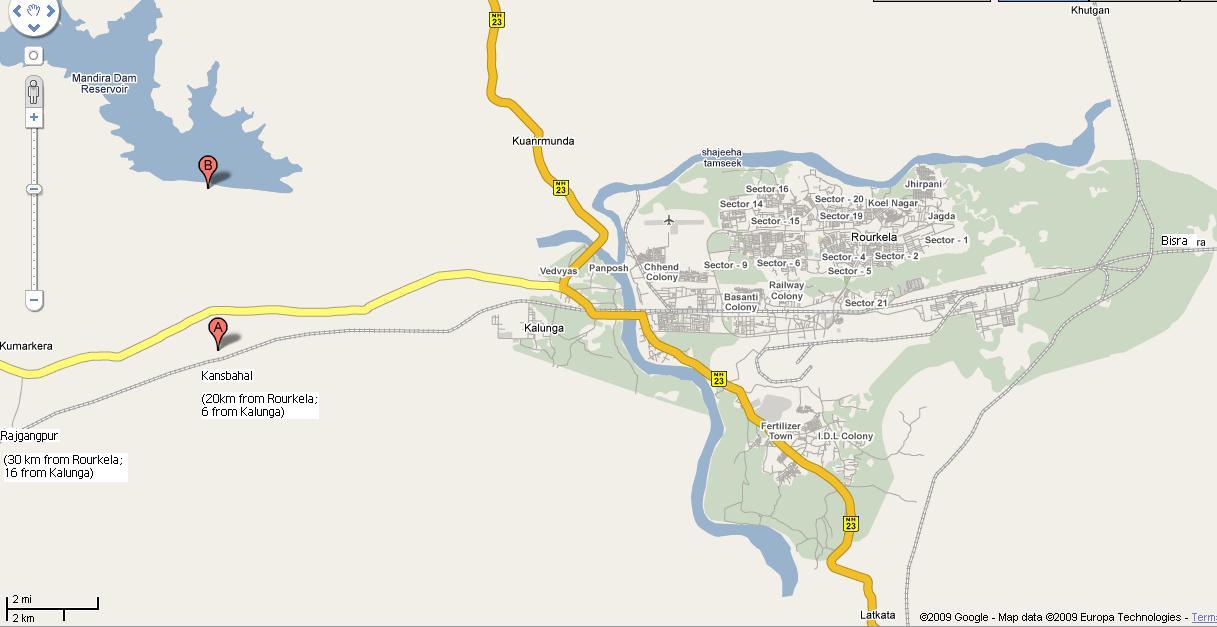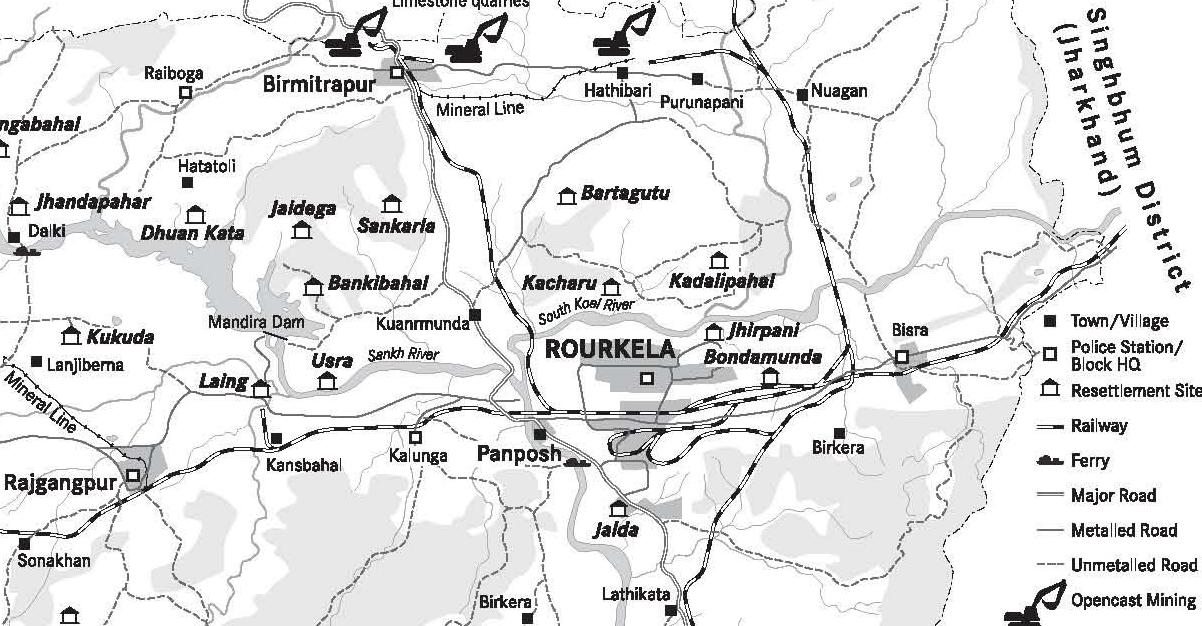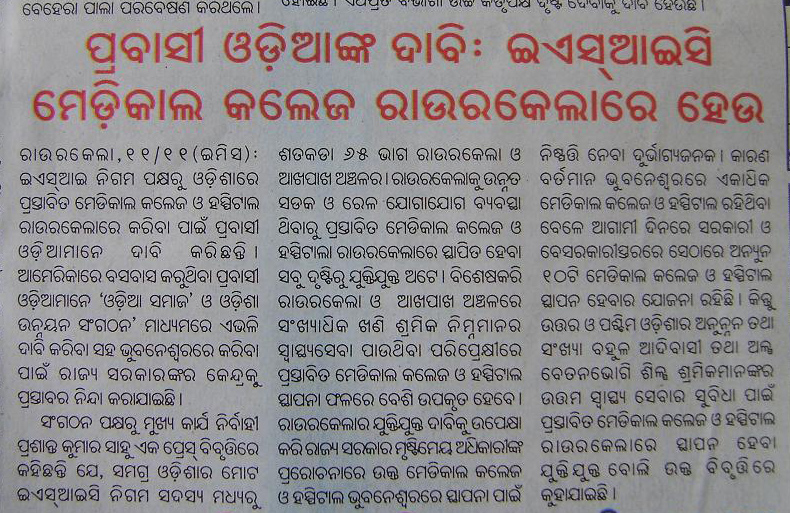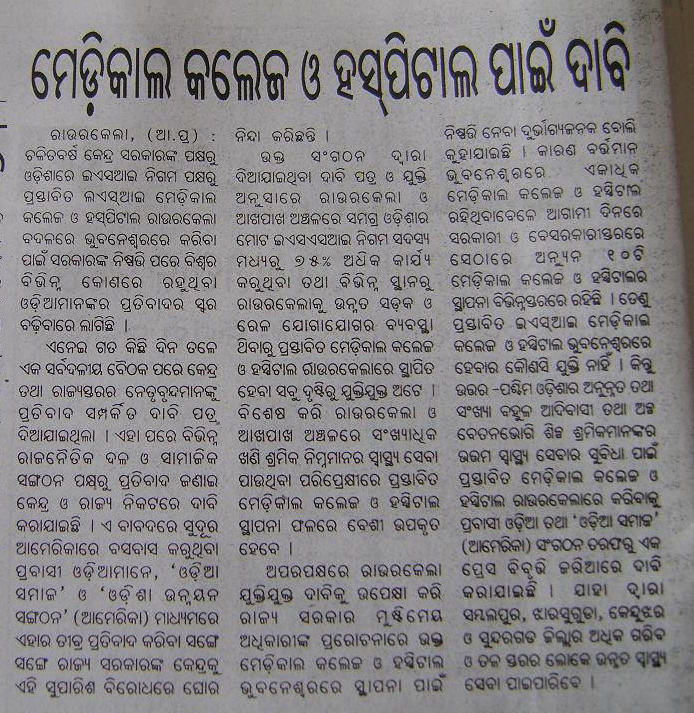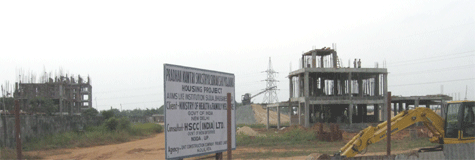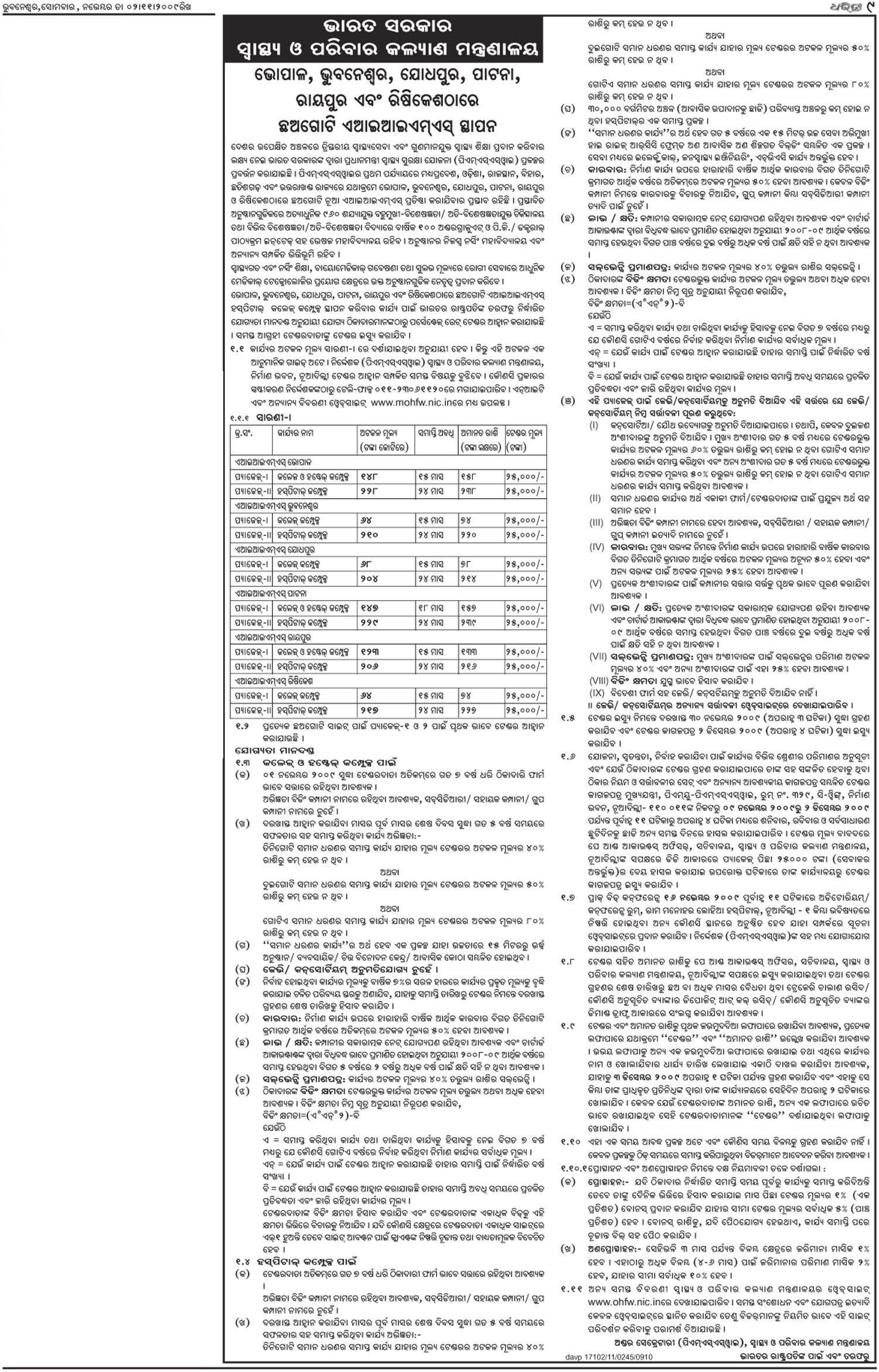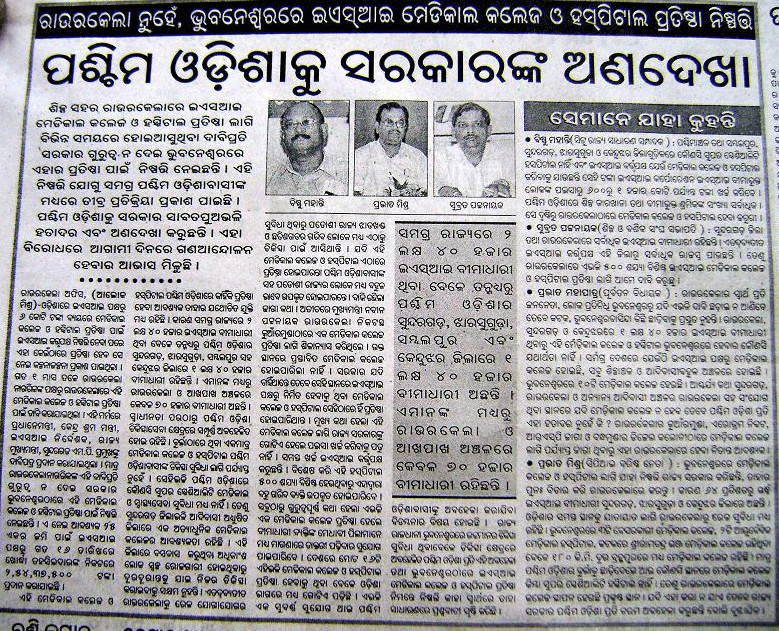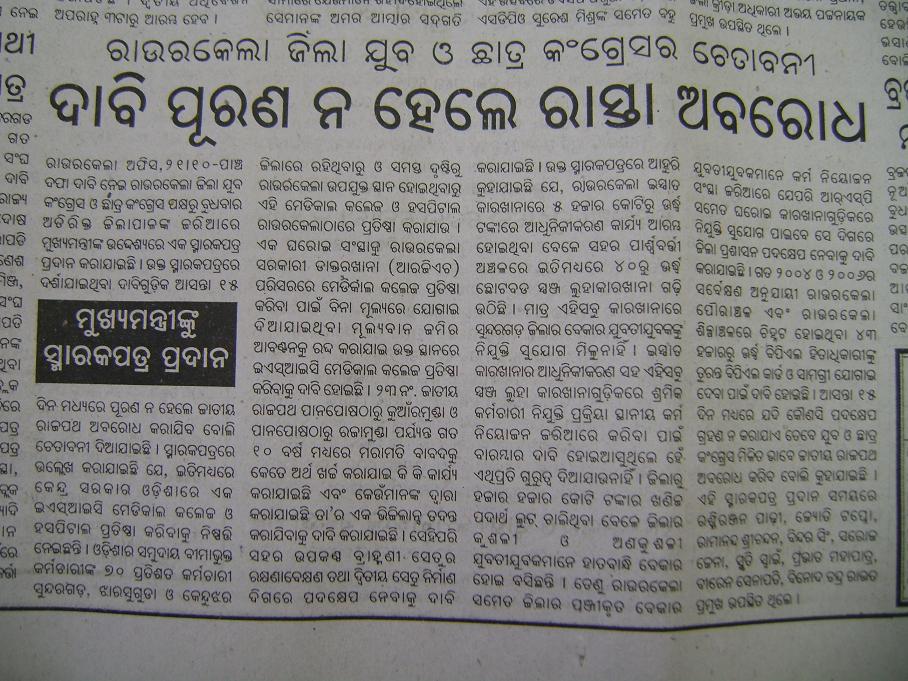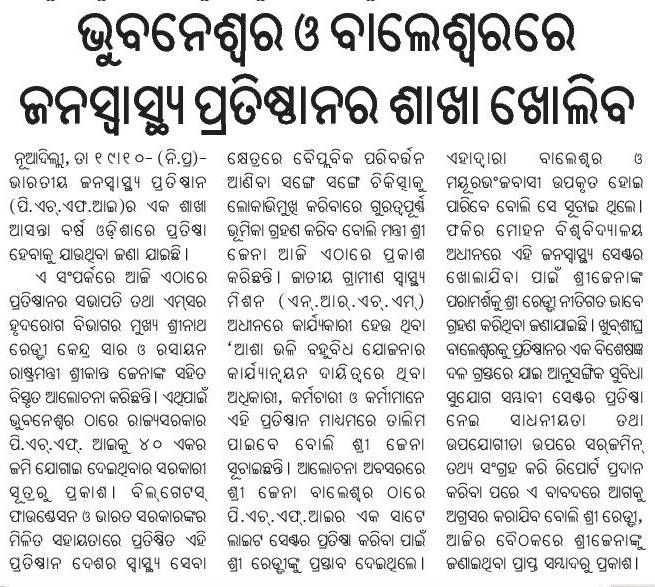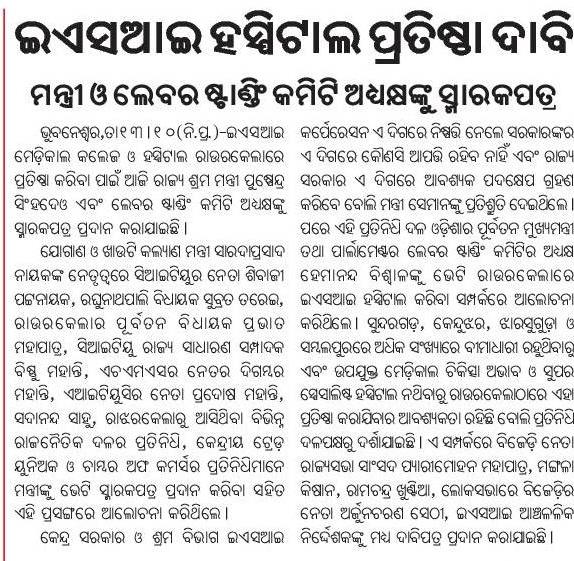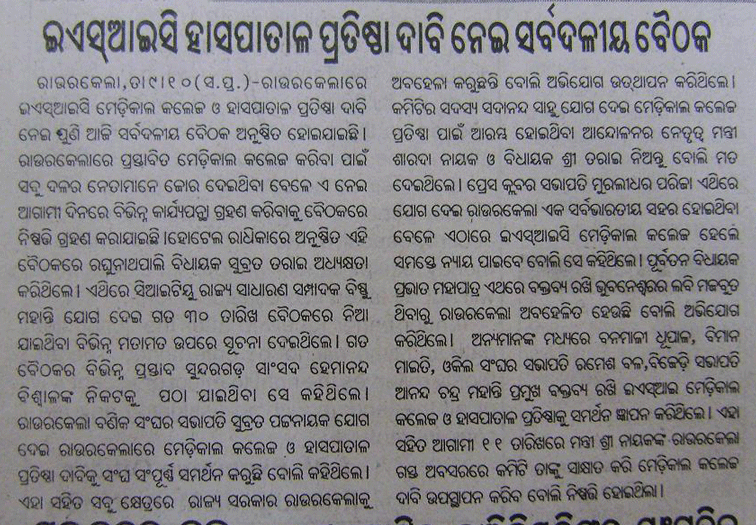Following is a letter that Dr. Karmee has sent to many people. This is an excellent work. It is well researched and based on something unique to the location, the Gandhamardan Hills of Baragarh and Balangir. (Considering that many in Orissa may not be aware of Gandhamardan Hills being in Orissa and/or its medicinal values, I have a companion piece on it at https://www.orissalinks.com/orissagrowth/archives/2776.)
I hope others will also focus on unique aspects and attributes of other parts of orissa and write to the higher education task force (HETF) about it.
Respected Mr. Patnaik, CM of Odisha and Members of the Higher Education Task force,
I appreciate the formation of higher education task force by the state government. Also, I am hopeful that such innovative steps will definitely sharpen the higher education of Odisha.
Sirs,
I would like to request the higher education task force to recommend the establishment of a “National Institute of Ayurveda” in Gandhamardan area in western Odisha. I am sure many of us are aware of the potential of Gandhamardan mountain and medicinal plants in it.
In this document, I am presenting the details about the “Gamdhamardan mountain as a reservoir of medicinal plants” with scientific references; thereby, making a case for the establishment of a National Institute of Ayurveda.
I am sure our respected CM, who is the author of the “Garden of Life: An introduction to the Healing Plants of India” will take this matter seriously. Also, I am hopeful that the higher education task force will take the necessary steps; so that, “the medicinal plants in Gamdhamardan mountain” will not get lost with time.
Please have a look on the following write-up for further details.
Thanking you with best regards,
Sanjib
1. “National Institute of Ayurveda” is a must in Gandhamardan area: Introduction and Analysis:
Gandhamardan mountain range is known world wide as a reservoir for medicinal plants. It is located in the western Odisha. More specifically, it is located in between Balangir and Bargarh district (Figure 1).
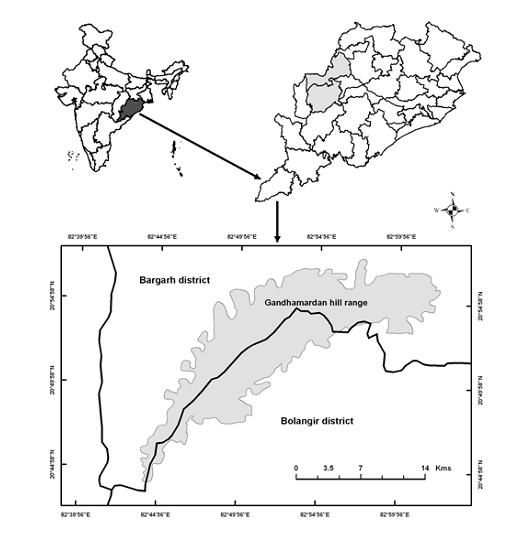
Figure 1 Map showing location of Gandgmardan mountain in between Balangir and Bargarh district
Many eminent scholars of life sciences have done a lot of research on the medicinal plants available in this mountain range. In fact, this hill range is legendary. It has found a place in folklore and mythology -of how Hanuman plucked Bisalyakarani, a medicinal plant, from this hill to save the life of Laxman in the battle of Lanka in “The Ramayana”. In addition, it is known to the whole world how this hill range was at the centre of one of the most prominent ecological movements, that is, the battle between environmentalists keen on protecting aryurvedic plants and the then state-owned Bharat Aluminium Corporation.
Apart from this, there are many scientific journals and books that are mentioning about the potential of medicinal plants available in Gandhamardan mountain (see the reference list)1-5. The state/central govt must establish a “National Institute of Ayurveda” in this place. Right now, both Balangir and Bargarh (Paikmal) each have one Ayurvedic College. Establishing a national level institute on Ayurvedic Medicine will help to a great extent to these colleges by carrying out research in emerging areas. Recently, research on ayurvedic medicine is attracting considerable attention in India and abroad.
It is important to note that, significant developments have boosted systematic research on different aspects of ayurveda and traditional medicine in India. They include the Golden Triangle project jointly managed by CSIR, ICMR and AYUSH; the New Millennium Indian Technology Leadership Initiative (NMITLI) of CSIR and various schemes of DST and DBT.
Additionally, ayurveda is also entering to the mainstream “Drug Discovery”. Following graph show the growing demand of research on Ayurvedic medicine.
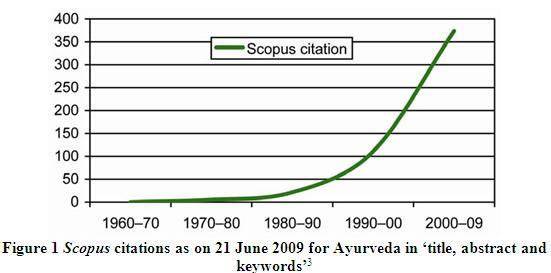
In addition to this, a paper by “Reddy and Pattnaik” from the Forestry and Ecology Division, National Remote Sensing Centre, Hyderabad 500 037, Andhra Pradesh, India points out many interesting facts about “Gandhamardan hill” 4.
It states that, after analyzing and studying the plant resources of Gandhamardan hill range a total of 912 vascular species belonging to 556 genera under 142 families were found. Herbs dominate the flora followed by trees, climbers and shrubs.
Therefore, proper conservation and management plans are needed to save the natural resources, especially medicinal plants, of this sacred hill range. Many botanists fear that this reserve of medicinal plants could be lost in the next few years if proper care is not taken and the indiscriminate collection and smuggling of herbs by local villagers is not stopped. The state forest department which is supposed to guard this botanical wealth is not able to do enough to stop all these developments because they lack of the knowledge and expertise about these plants. In fact, they have no clue which are useful medicinal plants and which are not.
In addition, in these places there is no organized way of farming of the medicinal plants. They just grow in the wild. Therefore, it is very difficult to guard these species. Taking the advantage of this situation any villages or smugglers can walk into the forest and collect the herbs. It is very important that the government should takes steps to grow these plants, harvest these properly, and finally do the marketing of these medicinal plants and herbs in a well organized manner. It should take care of the cultivation and preservation of these plants like it is doing for other forest products like sal seeds or kendu leaves etc.
However, intellectually this problem can be solved by establishment of a National Institute of Ayurveda. The above discussion/ description/ scientific observation strongly suggests the establishment of a National Institute of Ayurveda near Gandhamardan mountain.
2. Following are some of my points in support of establishing a National Institute of Ayurveda in Gandhamardan area:
* West is very much keen on establishing institute on ayurveda. One such successful institution is the National Institute of Ayurvedic Medicine established by Dr. Scott Gerson, USA, (http://niam.com/corp-web/index.htm). This is an example of an institute that has carried out research into Ayurvedic practices to a great extent. In this context, we must use our native expertise. In addition, the National Institute of Ayurvedic Medicine, USA can be a collaborative partner for establishing an institute Gandhamardan area.
* This mountain is very important to all of us and to the world. We should use our natural medicinal resources very judiciously. It is also very surprising that no steps have been taken for the preservation of these high-valued plants. It is the right time to establish a National Institute of Ayurveda in this area.
* As we know this mountain range is a reserve for medicinal plants. Therefore, it will provide adequate environment for cutting edge research/studies in different areas of ayurvedic medicine per international standard.
* Establishment of a National Institute of Ayurveda will help for organized way of farming the medicinal plants; which just grow in the wild. This will also help in preserving different rare species of plants.
* This Institute will provide a boost to the ongoing research/academic activities by Ayurvedic College Balangir and Shri Nrusinghanath Ayurved College Paikmal, Bargarh on this area. Along this line, establishing a National Institute of Ayurveda will make this place a leader in this area of science in national/international level.
* This step will attract companies like Dabur, Ayur, and others to set-up labs/companies in this area.
* From the above discussion it is very clear that research fundings are already available from the leading agencies of India like CSIR (Council for Scientific and Industrial Research), DST (Department of Science & Technology), and DBT (Department of Biotechnology). So, there will be no problem in setting up labs and developing infrastructure.
* There is a lot of synergistic research going on between Ayurvedic, Homeopathic and Allopathic branches of medicine. This is very clear from our day-to-day life as Allopathic doctors often prescribe medicines of Dabur, Neem, etc. Therefore, establishment of such an institute will further enhance the research between this National Institute of Ayurveda with other institutes viz. VSS Medical College, SCB Medical College etc. of the state.
3. The following steps need to be taken to establish a National Institute of Ayurveda in Gandhamardan
* It is important to look in to the web-site of these model Institutes viz. National Institute of Ayurvedic Medicine, USA (http://niam.com/corp-web/index.htm); Gujarat Ayurved University Jamnagar, Gujrat, India (www.ayurveduniversity.com); Rajasthan Ayurved University, Jodhpur Rajasthan (http://www.raujodhpur.org/aboutus.html); National Institute of Ayurved, Jaipur, Rajasthan (http://nia.nic.in/); Ayurvedic university, Hoshiarpur, Punjab; (http://www.financialexpress.com/news/punjab-clears-first-ayurvedic-university-in-hoshiarpur/517911/; This seems to be a new Institute).
* Immediately, the state govt. should present a proposal to the HRD Ministry for establishing National Institute of Ayurveda in Gandhmardan area.
* Along the line of the above institutes, the state govt. in collaboration with govt. of India must establish a National Institute of Ayurveda in Gandhamardan area.
References:
1. Netra Bhanu Pradhan, Gandhamardan – A treasure House of Medical Plants, Navaratna Journal, Jan-Feb, 2008, 41-44.
2. Ayurveda: scientific research and publications, Current Science, 2009, 97( 8), 1117-1122
3. C. Sudhakar Reddy and Chiranjibi Pattanaik, An Assessment of Floristic Diversity of Gandhamardan Hill range, Orissa, India. Bangladesh J. Plant Taxon. 16(1): 29-36, 2009
4. Following are some of the research papers taken from the reference list of the paper 3 (Papers only with the name Gandhamardan are taken)
Brahmam, M. and Saxena, H.O. 1990. Ethnobotany of Gandhamardan hills – Some noteworthy folk medicinal uses. Ethnobotany 2: 71-79.
Brahmam, M. and Saxena, H.O.1990. Phyto-chemical screening of the plants of Gandhamardan hills of Orissa (India) for tannins, saponins, flavonoids and alkaloids. Asian J. Plant Sci. 1: 71-79.
Misra, R.C. 2004. Therapeutic uses of some seeds among the tribals of Gandhamardan hill range, Orissa.Indian J. Traditional Knowledge 3: 105-115.
Misra, R.C. and Behera, G. 1998. Ecological status of Gandhamardan forests using remote sensing techniques. In: Biodiversity Conservation: Problems and Prospects. Proc. National Seminar on Biodiversity Conservation, Bhubaneswar, India, pp. 75-80.
Misra, R.C. and Das, P. 1998. Vegetation status of Nrusinghanath – Harishankar complex, Orissa. J. Econ.Taxon. Bot. 22: 547-554.
Mishra, R.C. and Das, P. 2003. Wild poisonous seeds: Some notable species from Gandhamardan Hill ranges of Orissa. J. Econ. Bot. 27: 513-518.
Misra, R.C. and Das, P. 2004. Vegetation stratification of Gandhamardan hill range, Orissa using remote sensing techniques. J. Econ. Taxon. Bot. 28: 429-438.
Mishra, R.C., Panda, P.C. and Das, P. 1994. Lesser known medicinal uses of plants among the tribals of Gandhamardan hill ranges, Orissa. In: Gupta, B.K. (ed.), Higher Plants of Indian Subcontinent, Vol. III, Bishen Singh Mahendra Pal Singh Publications, Dehra Dun, India, pp. 135-142.
Mishra, R.C., Panda, P.C. and Das, P. 2001. A taxonomic study of the ferns and fern allies of Gandhamardan hills, Orissa. J. Econ. Taxon. Bot. 25: 577-590.
Panigrahi, G. 1963. Gandhamardan Parbat, Orissa – A potential source of important indigenous drugs. Bull. Reg. Res. Lab. 1: 111-116.
Pattanaik, C. and Reddy, C.S. 2007. Medicinal plant resources of Gandhamardan hill range, Orissa: An urgent need for conservation. Natl. Acad. Sci. Lett. 30: 35-38.
Raju, D.C.S. 1960. Vegetation pattern of Gandhamardan hills. Bull. Int. Soc. Trop. Ecol. 1: 21-22.
Saxena, H.O. and Brahmam, M. 1995. Vascular flora of Gandhamardan hills. J. Econ. Taxon. Bot. 19: 113-132.
5. NOTE: This is not the complete list of references. Because of time limitation I have collected as much as I can.
November 4th, 2009
Following is from PIB release http://pib.nic.in/release/release.asp?relid=53747.
|
Update on AIIMS-like institutions tenders/nits worth Rs. 1908 Cr for the main civil packages for six new AIIMS-like institutions invited
|
| |
17:38 IST |
Government of India has launched the Pradhan Mantri Swasthya Suraksha Yojana (PMSSY) with the objective of correcting regional imbalances in the availability of affordable/reliable tertiary healthcare services and also to augment facilities for quality medical education and research in the country. Under the Ist phase of this scheme, six new AIIMS-like institutions are being set up, one each in the States of Bihar (Patna), Chattisgarh (Raipur), Madhya Pradesh (Bhopal), Orissa (Bhubaneshwar), Rajasthan (Jodhpur) and Uttarakhand (Rishikesh) at an estimated cost of approximately Rs 820 Crores per institution. Each of these institution will have a 960 bedded hospital (500 beds for the medical college hospital; 300 beds for Specialty/Super Speciality departments; 100 beds for ICU/Accident and trauma. In addition 30 beds for Physical Medicine & Rehabilitation (PMR) and 30 beds for Ayush have been kept. This would be full fledged multi-disiciplinary healthcare institution offering facilities in 42 speciality/super-speciality disciplines. Medical College will have an annual intake of 100 UG intake besides imparting PG/doctoral courses in various disciplines. Nursing College will also have 100 UG intake and 25 PG intake annually.
The respective State Governments have provided 100 acre land free of cost. The Ministry of Health and Family Welfare, Govt. of India engaged eminent architectural firms to prepare the designs and drawings. The architectural/DPR Consultants were selected on global competitive basis. The Project Consultants have also been selected for each site on the basis of open competitive bids. Project Cell at the sites comprising engineering, finance and administrative set up has been constituted and posts are being filled up on deputation basis from other Central Govt./State Govt. organizations.
The construction work has been split into 7 different packages, depending on the functional /sequential requirement and core specialization needs. Tenders/NITs for the main civil packages viz. (i) Civil works for Medical College, Nursing College, AYUSH and Hostels, (Patna, Raipur, Bhopal); and (ii) Civil works for Hospitals – OPD Complex including all internal services and specialized works are being invited. The total cost of these two packages is between Rs.250 – 300 Crore for each site, totaling Rs. 1908 Cr. for all six sites.
The salient features of the tenders /NITs issued on 2nd Nov. are as follows:-
(i) All detailed engineering drawings have been prepared.
(ii) Environmental clearance has been obtained for 5 out of 6 sites and is being obtained for the remaining site (Bhopal).
(iii) Medical College Complex will be built in 15 months time.
(iv) The Hospital – OPD complex is to be built in 24 months.
(iv) Apart from ensuring timely payment, there are very strong incentive clause for early completion with a bonus of 1% of the tendered value per month computed on per day basis, subject to maximum of 5%.
(v) Like-wise there is a strong disincentive clause/penalty if the project is delayed.
Pre-bid Conference is scheduled for 16th November, 2009. Last date of receipt of bids would be 3 Dec 2009
************
October 30th, 2009
This is mentioned in the scrolling headline of its web page at http://www.srisriuniversity.org/ver2/default.htm. About the courses that will be offered, following is from http://www.srisriuniversity.org/ver2/courses.htm.
Sri Sri University aims to become a centre of excellence matching international standards in education. This will be enabled by offering courses in various disciplines, organized into schools that will function as logical academic entities.
Keeping in mind, the growth of various economic sectors and their employment potential, the needs of the society and country at large and vision of His Holiness Sri Sri Ravishankar, an indicative list of schools proposed in multiple disciplines are:
- Management
- Engineering
- Medicine
- Law
- Government
- Education
- Mass Communication
- Agriculture
- Tourism
- Indology
- Advanced Research
To impart marketable skills in short duration and generate qualified employable individuals in a short span of time for our burgeoning economy, Certificate school will impart 6 month courses in various fields.
Proposed courses for first year
|
School
|
Name of the Course
|
Duration
|
|
Management
|
PGDM (Marketing)
PGDM (Finance)
PGDM (HR)
PGDM (Systems)
|
2 Years
|
|
Agriculture
|
AgriBusiness Management
|
2 years
|
|
Education
|
Bachelor in Education
Masters in Education
|
2 Years
2 Years+
|
|
Medicine
|
Research in Ayurveda
Osteopathy
|
4 Years
2 Years
|
Certificate courses of 6 month duration will be offered in the manufacturing stream e.g. Welding , Electrical etc. as well as in IT stream e.g. Computer Hardware, Web Designing and Graphics etc.
In regards to its short term and long term mission, following is from http://www.srisriuniversity.org/ver2/mission.htm.
Sri Sri University aims to create centers of excellence for providing knowledge, education, training, and research facilities of high order in the field of arts, commerce, science, technology, media, healthcare, business, and other related higher education. The focus of the university is to function in Orissa, India and then the world as a learning resource centre which provides opportunity to learn, teach, research with relevance to the needs of the economy at a national and international level. It also aspires to provide arrangement for national and international participation in the field of higher and professional education including technical education with close associations with the relevant industry. The programs that are value based with inspiration from His Holiness Sri Sri Ravi Shankar in which the aspiration of India and the world in terms of educational standards are met.
The endeavour is to have,
-
A core campus comprising academic and non-academic buildings to cater to the needs of 15,000 students, 1,500 faculty and matching number of non-teaching staff with adequate infrastructure, in terms of physical facilities, excellent faculty as well as the right environment that would attract the best talent.
-
Courses that are in demand such that the students get ready employment. Basic science, humanities, engineering, medicine, pharmacy, business management, law, bio-science, art, culture and vedic studies, ayurveda is on the list.
-
To Institute 44 courses in next 5 years across disciplines.
-
To have 8 fully functional and completely equipped departments in next 10 years.
-
To initially admit approximately 350 students and approximately 3000 students by its fifth year
-
To employ 35 faculty members in its first year and 145 by its 5th year.
-
To set-up a separate world-class Medical College within the campus to produce qualified doctors with a deeper sense of commitment and responsibility towards this noble service. The college shall also have an adjacent Super-Speciality Hospital with the latest state-of-the-art facilities and equipments to facilitate total practical experience to the students to complement the excellent theoretical education, and also to provide comprehensive treatment facilities for the needy from far and wide.
Some more detail about the teaching hospital time line is at
http://aolhet.com/en/node/2. We present it below.
Sri Sri University Teaching Hospital
The goal of the Sri Sri University Teaching Hospital is to provide primary, preventive and educational healthcare. The Teaching Hospital will offer state-of-the-art, affordable medical care to communities in underserved areas by using an integrated approach that combines traditional health care and modern technology.
In the period between 2011 and 2016 the Art of Living Health and Education Trust aims to:
• Design and construct the Sri Sri University Teaching Hospital with specialized facilities on campus;
• Build 25 primary care satellite clinics in locations determined by a feasibility study;
• Offer telemedicine services in primary care clinics with the capability to transfer patients with specialized medical needs to appropriately staffed and equipped clinics;
• Emphasize community-driven development through the International Association for Human Values’ 5H program [Health,Hygiene, Homes, Harmony in Diversity, Human Values]; and
• Develop a replication strategy using the design, construction, and operations of the Sri Sri University Teaching Hospital as a prototype, in collaboration with other NGOs and charitable organizations, to extend His Holiness Sri Sri Ravi Shankar’s vision of affordable primary, preventive and educational healthcare to other parts of the world.
October 11th, 2009
